When you talk about the music industry, it is dominated by men, controlled by men, the money is made by men, and the names that we know are primarily of men.
-Reverend Barbara Riley
I heard my first gospel record when I was 23 years old.
I was living in Monterey, California, and attending the Defense Language Institute, studying Dutch. On the weekends, I worked part-time as a DJ at KAZU radio station in Pacific Grove. I was mentored by a group of great DJs who were big fans of the New Orleans Jazz & Heritage Festival. They went every year and told great stories about the music and the musicians they heard down there. One DJ, Cody Land, was a big gospel fan and introduced me to groups like The Turbans, Swan Silvertones, and my favorite, the Dixie Humingbirds.
The Dixie Hummingbirds was formed in 1928 in Greenville, South Carolina, by James B. Davis and his classmate Barney Parks under the name the Sterling High School Quartet. In September 1939, they traveled to New York and made their first recordings with Decca Records. In 1941, as part of the Great Migration, they decided to move up north to Washington, D.C. They signed with many labels through the years and recorded with mixed results. But in 1966, they recorded Move On Up a Little Higher which changed their fortunes. It was released on the HOB label, started in 1956 in Detroit, Michigan, by Mrs. Carmen Murphy, who owned the House of Beauty, the beauty parlor she named her label after:
From that album, here is the wonderful Mercy Lord:
The album was recorded with the Angelic Gospel Singers, a Philadelphia female quartet founded and led by Margaret Wells Allison.
The Angelic Gospel Singers toured extensively on the East Coast and central United States in the 1940s and 1950s and signed a recording contract with Philadelphia-based Gotham Records in 1947. Their recording Touch Me, Lord Jesus was a hit on R&B stations in 1949 and sold over a million records:
These were courageous women. Although the first gospel recording was made by Arizona Dranes, a woman, in June 1926 for the Okeh label, the gospel music business had long been a man’s world.
In his 2015 book, A City Called Heaven, Robert M. Marovich wrote:
It is not surprising that the earliest sanctified recording artist was a woman. During the 1920s, in denominations such as COGIC (Church of God in Christ), where only men were allowed to pastor churches, women had to be enterprising to carve out their niche in the Pentecostal church. Some became teachers or evangelists. Others spread the good news by street singing or participating as vocalists for tent revivals.
As I look back on those days in the mid-1980s at KAZU, listening to the gospel songs Cody and the other DJs played over the radio, it occurs to me now that they were all male groups, such as the Dixie Hummingbirds.
So this week on that Big River called Jazz, we will dig our paddles into the world of legendary female pioneers of gospel music.
There would be no hip hop without soul, no soul without R&B, and no R&B without Gospel. In fact, B.B. King, while growing up in Indianola, Mississippi, heard gospel music before he ever heard the blues. In the South, a lack of economic opportunity bred an entrepreneurial spirit that fueled the rise of gospel music, which they brought North with them during the Great Migration. The importance of gospel music in the development of American music is often overlooked, and the critical role women played in the development of gospel music is even more overlooked.
In the early days of gospel music, a woman who aspired to sing professionally faced the daunting challenge of balancing motherhood with ministry and music, a tough dilemma. However, in 1919 in Chicago, the Church of God in Christ (COGIC) began to encourage rhythmic musical expression and dancing in praise. More importantly, it decided to change its course and allow women to sing and teach in church, which unlocked the door for a league of women to join the gospel tradition.
The first renowned female gospel singer and recording star was Sister Rosetta Tharpe. She gained popularity in the 1930s and 1940s for her unique blend of gospel music and electric guitar playing:
Sister Tharpe was a crossover queen. In her fantastic 2012 book, Isn’t Her Grace Amazing, Cheryl Willis wrote this about Sister Tharpe:
Before Chuck Berry, Little Richard, and Elvis built the cornerstone for rock and roll, a brassy, mocha-colored girl from Cotton Plant, Arkansas, was unwittingly laying the foundation.
In the mid-1920s, Katie Bell Nubin and her five-year-old daughter, Rosetta, arrived in Chicago from Cotton Plant. It was on Maxwell Street that Katie played mandolin and delivered the word, and young Rosetta sang songs. Eventually, Rosetta, as Sister Rosetta Tharpe, parlayed her “street-meeting” experience into gospel music stardom.
However, it was when she dared to play the guitar, an instrument typically associated with men, that she entered new territory. On October 31, 1938, at the age of 23, she made her first recordings on Decca Records. These were the first gospel songs recorded by Decca and became instant hits, establishing Sister Tharpe as an overnight sensation and one of the first commercially successful gospel recording artists. From that session, here is Rock Me:
Although her Decca record deal locked her into recording many secular songs, the door for women singing gospel was opening.
At around the same time, Mahalia Jackson, widely considered one of the most influential vocalists of the 20th century, was singing with her aunt Hannah’s church choir at the Greater Salem Baptist Church in Chicago. In the late 1930s and 1940s, she began touring with the father of gospel music, Thomas Dorsey.
Nationwide recognition came for Jackson in 1947 with the release of Move On Up a Little Higher on the Apollo label, which sold two million copies. Here’s that 78 rpm recording, a different, earlier version than the one featured above:
Here’s another Jackson favorite of mine, Lord Don’t Move the Mountain:
Lord don't move the mountain, but give me strength to climb it.
Please don't move that stumbling block, but lead me Lord around it.
With a career spanning 40 years, Jackson was integral to the development and spread of gospel blues in black churches throughout the U.S. She helped open the door wide for women singing gospel music. However, this placed a new burden on women as they struggled to learn to balance motherhood with gospel careers in both ministry and music.
In her 2022 book, Isn’t Her Grace Amazing, Cheryl Wills wrote about the challenge of motherhood versus ministry:
Songs like "No Change,” I Remember Mama,” and “Don’t Drive Mama Away” spoke deeply to the relationship between mother and child and how those dynamics were beginning to change in American society. Songs like that were trying to encourage us to stick with the things that helped our community come together.
The song No Change was recorded in 1975, and it became Shirley Caesar’s first gold record. Throughout her seven-decade career, Caesar has often been referred to as the "First Lady of Gospel Music" and "The Queen of Gospel Music." She won eleven Grammy Awards.
Shirley Ceasar was born in Durham, North Carolina, one of twelve children. She began singing gospel music at four years old and at ten joined the Just Came Four, a quartet led by her father. Her recording career began in 1951, at 12 years old, when she signed and recorded a single with Cincinnati’s Federal Records:
However, her professional music career began in 1958 at 19, when she approached Albertina Walker about joining The Caravans, one of the most popular female gospel groups at that time.
Here is a 1962 video of Ceasar singing Sweeping Thru the City, her biggest hit with the Caravans:
In 1966, Caesar left the group to record as a solo artist. In 1975, she recorded her hit album No Charge on the HOB label. Here she is singing the title track:
Another Caravans star was Dorothy Love Coates, who first rose to stardom in the 1950s as a member of The Original Gospel Harmonettes:
The Original Gospel Harmonettes recorded some singles for RCA Victor in 1949 and 1950; however, their first sides for Specialty Records - I'm Sealed and Get Away Jordan - recorded with Love Choates in 1951, were far more successful. With her "raggedy" and "rough" voice and preacher's fire, Love Coates could outsing the most powerful, hard male gospel singers of the era. She helped the group become a powerhouse. They recorded a series of hits in the years that followed before disbanding in 1958.
The Harmonettes included another star, Inez Andrews from Birmingham, Alabama. As a housewife, she followed the path of many women in her family and became a wife and mother of seven children. In an interview with Ebony magazine, she said:
I had an epiphany. One day, I was cooking some rice and brown beets, and I said, “This wasn’t what I wanted to do with my life. This wasn’t what I wanted to be.” I felt there was something else, something better. And I said to myself, “Is this all God planned for me?” And as I began to say that, I got a pencil and a brown paper bag and I wrote.
When the Harmonettes became popular throughout churches in the 1950s, Andrews became the understudy of lead singer Love Coates, who eventually recommended her to join the Caravans, which included Shirley Caesar, Dorothy Norwood, and Albertina Walker. According to Walker, who founded the Caravans, “Nothing ever worked for the Caravans until Inez started whistling - hitting the high notes.”
Inez Andrew’s version of Mary, Don’t You Weep was covered by Aretha Franklin on her legendary album Amazing Grace.
In January 1972, already a superstar in the R&B world, Aretha Franklin joined her mentor, Rev. James Cleveland and his Southern California Community Choir, at New Temple Missionary Baptist Church in the Watts section of Los Angeles, for two days of live recordings for her first gospel album, Amazing Grace.
The album was a critical and commercial success, selling over two million copies in the United States alone and earning a double platinum certification. It also won Franklin the 1973 Grammy Award for Best Soul Gospel Performance. It stands as the best-selling disc of Franklin's entire fifty-plus-year recording career, as well as the highest-selling live gospel music album of all time.
However, Franklin’s next album, Hey Now Hey (The Other Side of the Sky remains my favorite Franklin album. From that album, here is Angel, written by Aretha’s sister Carolyn:
The great Phil Woods and Joe Farrell play on the album, and it’s Farrell’s tenor sax solo on Angel. The album was produced by Quincy Jones and released in 1973 by Atlantic Records. It was originally planned to be a straight jazz album; however, as the sessions evolved, Franklin and Jones began embracing and incorporating pop, soul, and funk.
Here’s one more for the road. With its roots in gospel music and the broader Black church culture, soul music captured the spirit, emotions, and chaos of the 1960s civil unrest that continued into the early 1970s.
One leading group to emerge from this movement was the Edwin Hawkins Singers, which got its start as the Northern California State Youth Choir, a community gospel choir formed in May 1968. The Choir, led by Hawkins, included 47 young men and women in their late teens and early twenties.
They recorded an R&B-infused gospel album, Let Us Go into the House of the Lord at Ephesian Church of God in Christ in Oakland. It included eight songs and was released on the Century label:
The album was later reissued on the Pavilion label
One of the songs, Oh Happy Day, exploded onto the charts after it was released as a single in 1969. In less than a year, 900,000 copies of the single had sold, sparked in part by the choir’s performance on the popular dance show American Bandstand. Quickly following on the heels of that success, the group won its first Grammy in 1970 for Best Soul Gospel Performance.
In 1970, the North California State Youth Choir's name was officially “rechristened” the Edwin Hawkins Singers because the COGIC objected to Buddha Records, which had purchased the rights to the Pavilion album and so controlled the Northern California State Youth Choir name.
In the same year, the Edwin Hawkins Singers collaborated with folk artist Melanie on the song Lay Down, which became her breakthrough hit in the United States. She wrote the song after performing at Woodstock in August 1969, and it describes how she felt looking out at the sea of people in the audience.
Melanie talks about these feelings before performing Lay Down with the Edwin Hawkins Singers in this 1970 Dutch video:
Edwin Hawkins and the ensemble revolutionized the evolving genre of gospel music.
With their success, gospel music was beginning a transition to a more contemporary folk and inspirational sound wth the energy and excitement of funk and soul. However, in the early years of gospel music, women had to choose between motherhood, ministry, and music. By choosing music, they opened the door for future singers like Yolanda Adams, Mary Mary, and Kim Burrell, and many more to come who will continue to carry the torch for the queen mothers of gospel music and “move on up a little higher.”
Next week, on that Big River called Jazz, I will remember my son, who passed away last year on August 22.
Please hit this link to buy me a cup of coffee if you’d like to show your guide some appreciation for this and past journeys. Know in advance that I thank you for your kindness and support.
If you like what you’ve been reading and hearing so far on our journey and would like to share this with someone you think might be interested in learning more about our great American art form, Jazz, just hit the “Share” button.
From Astaire to Sun Ra: A Jazz Journey is a reader-supported publication. To subscribe, please hit the “Subscribe now” button.
Feel free to contact me at any time to talk shop. I welcome and encourage that.
Until then, keep on walking….


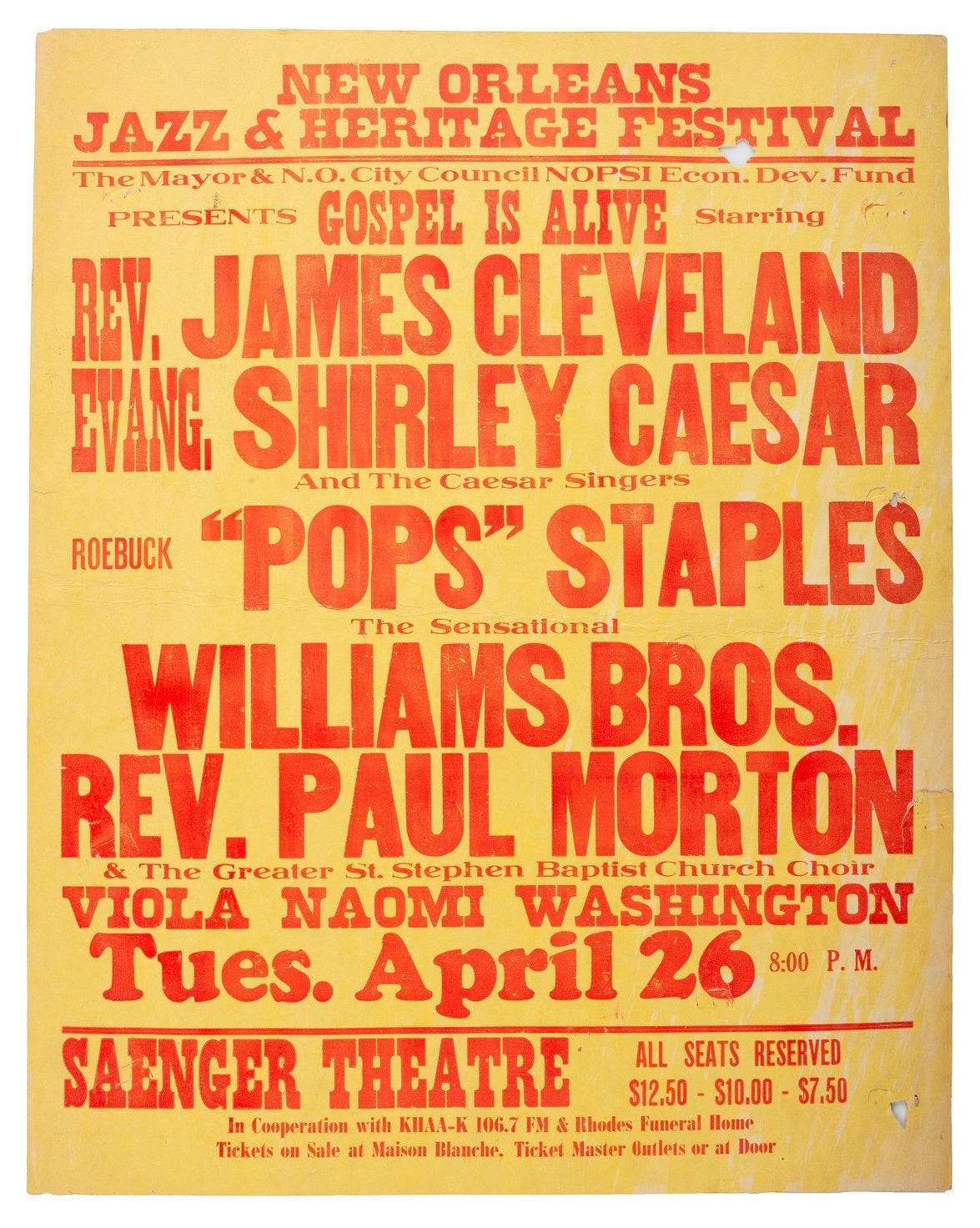
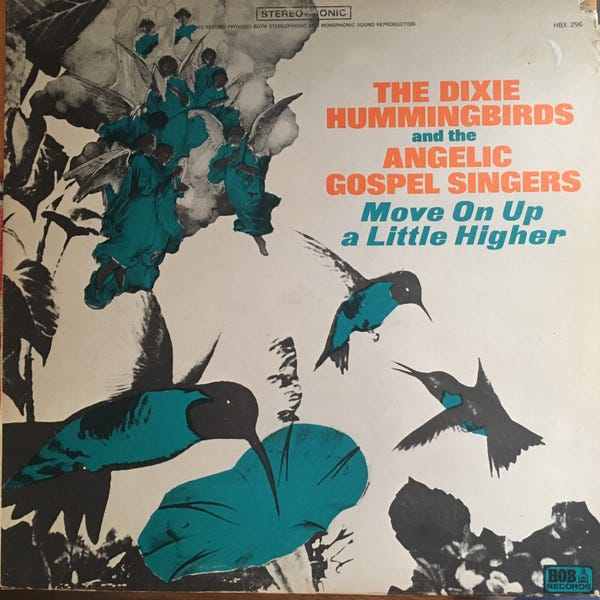
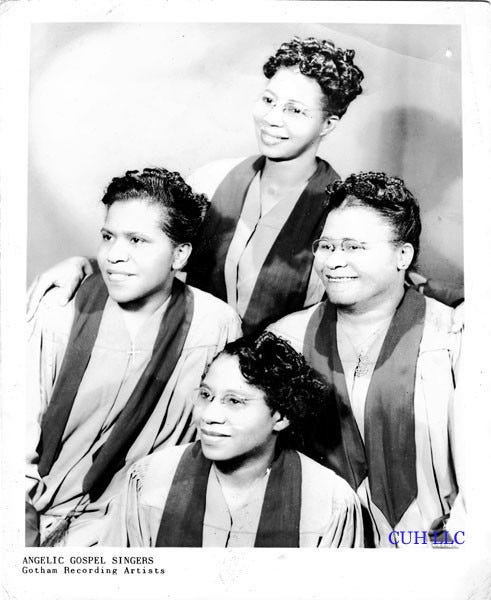
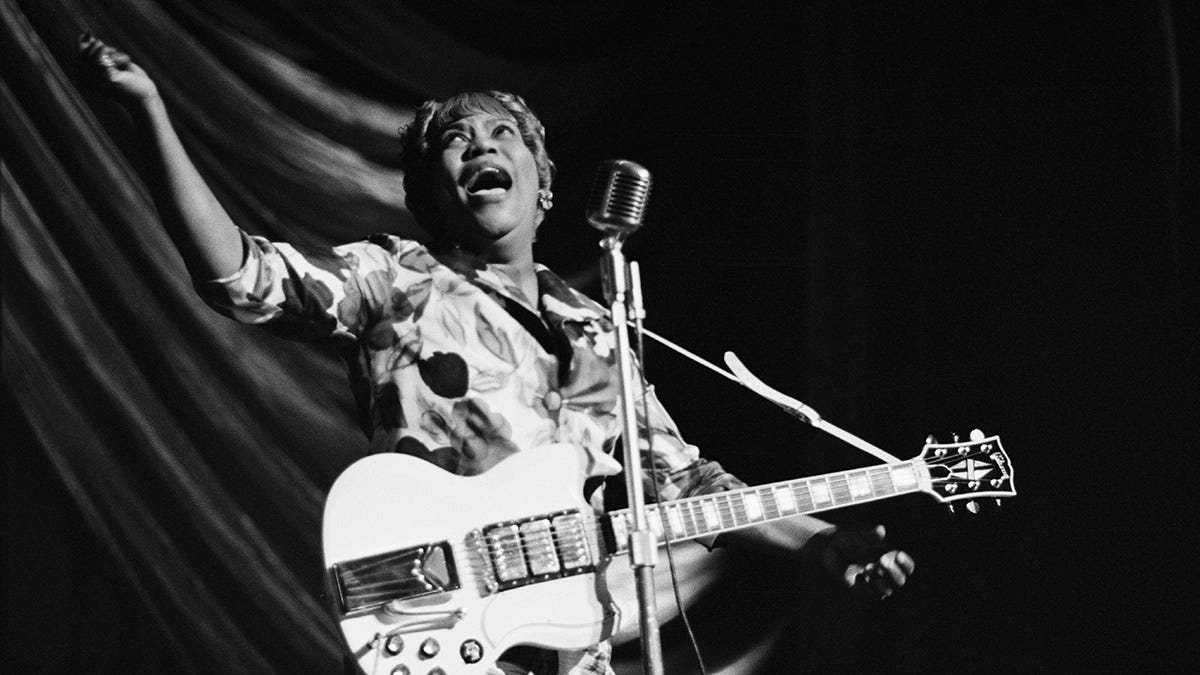
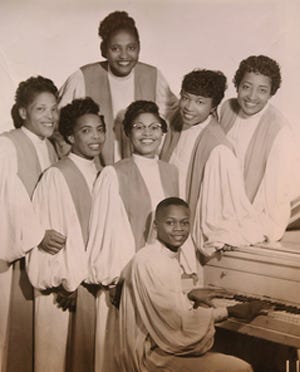

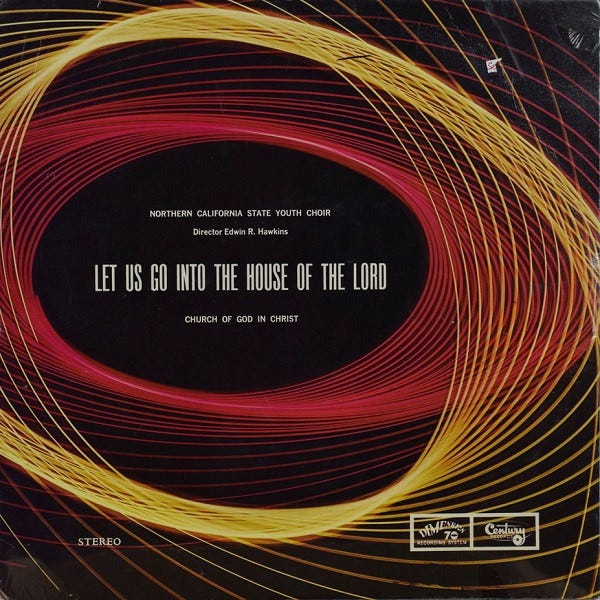
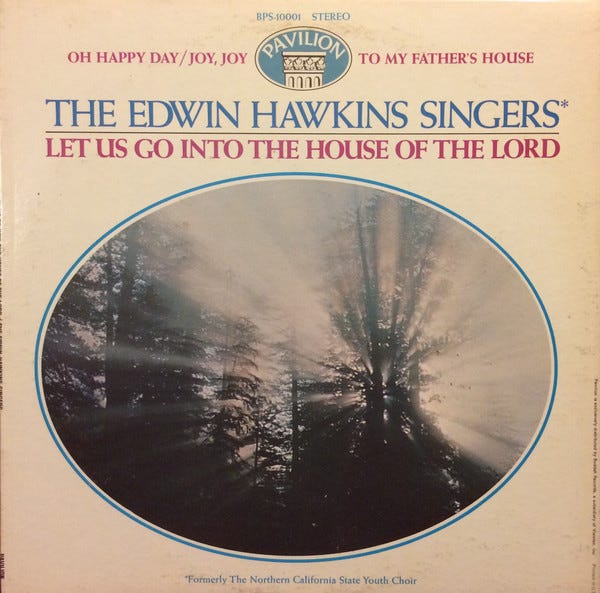
Interested readers should go to YouTube and search out the Davis Sisters, of Philadelphia, Pennsylvania. Everything they do is fantastic (IMO) . But I particularly love their appearance on TV Gospel Time. The grainy video and crackle audio doesn't begin to hide the magnificence of all these performances
Thought you might appreciate this track -
https://youtu.be/ku4nHWevnaw?feature=shared